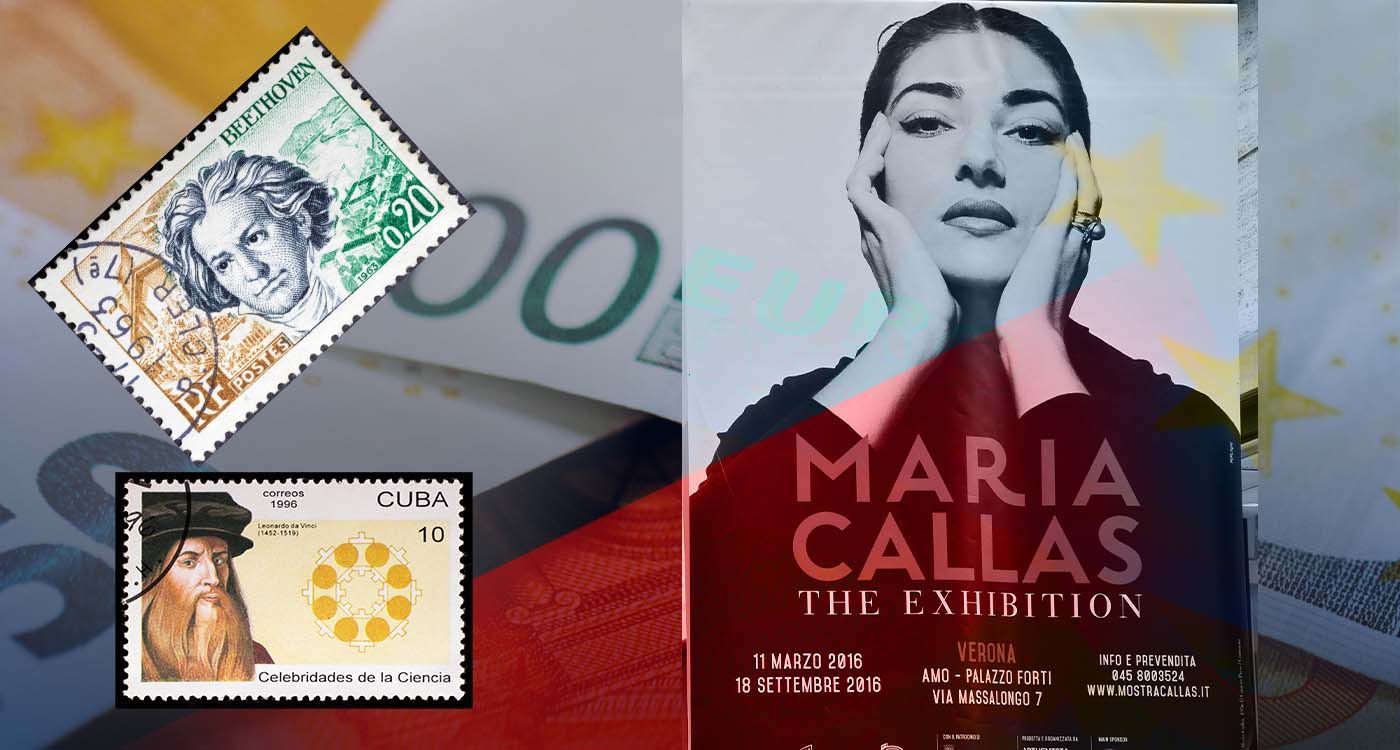
In 2026, the European Central Bank (ECB) is set to unveil a historic redesign of euro banknotes, potentially bringing figures like Leonardo da Vinci, Maria Callas or Beethoven into the wallets of Europeans. However, the final decision is still pending.
Nearly a quarter of a century after their introduction, euro banknotes are set to be completely redesigned, both aesthetically and in terms of security. If the ECB stays on schedule, the new banknotes are expected to be unveiled from 2026, following an unprecedented public consultation and design process.
Since 2002, euro banknotes have depicted fictional arches and bridges to symbolize European unity without favoring any single country or culture. But times are changing. Seeking a deeper sense of meaning and shared identity, the ECB aims to embed the currency more firmly in Europe’s collective imagination. The goal is to “better reflect Europe’s shared history, cultural diversity and intellectual heritage,” while also updating security measures and improving accessibility.
In January 2024, the ECB launched a large-scale public consultation, inviting input from citizens and experts in design, culture and anti-counterfeiting. Two main themes emerged. The first, “European Culture,” would celebrate figures who have shaped the continent’s arts, science or literature. The second, “Rivers and Birds,” takes a naturalistic approach, illustrating Europe’s landscapes and wildlife while symbolizing flow, resilience and freedom.
European Culture vs. Rivers and Birds
The “European Culture” concept has drawn the most attention. The ECB has proposed a tentative lineup of icons for the new banknotes: Maria Callas, the Greek opera legend, on the €5 note; Ludwig van Beethoven, the universally renowned German composer, on the €10 note; Marie Curie, the Franco-Polish pioneer of radioactivity, on the €20 note; Miguel de Cervantes, author of Don Quixote, on the €50 note; Leonardo da Vinci, the Italian Renaissance genius, on the €100 note; and Bertha von Suttner, Austrian pacifist and the first woman to win the Nobel Peace Prize, on the €200 note. Other personalities could be added to this selection, which aims to respect gender balance, geographic diversity and prominence.
These names are provisional. The final selection will follow a European design competition currently underway, involving artists, graphic designers and currency security experts tasked with creating the imagery and anti-counterfeiting elements for the next generation of notes. The ECB is also ensuring the new notes are more accessible for visually impaired users and meet environmental sustainability standards.
The alternative “Rivers and Birds” theme remains in the running. Each denomination would feature a major European river, such as the Danube, Loire or Rhine, paired with an iconic bird species. The focus would be on symbolism, highlighting connection, movement and biodiversity. This less personalized design would avoid debates over selecting individual figures and emphasize an image of Europe united through nature as well as culture.
The ECB’s final decision, expected in 2026, will be based on the results of the design contest and a new public consultation. The first banknotes will not enter circulation until the prototypes are approved, technical tests are completed and large-scale production is ready, which could push their release to the end of the decade.
This redesign addresses several goals: strengthen banknote security against counterfeiting, make the currency more accessible and representative and give a symbolic new life to the euro as the European Union faces questions about its shared project. If the “European cultural pantheon” theme is confirmed, paying for a coffee or buying a book could soon mean holding Leonardo da Vinci’s gaze, Maria Callas’ smile or Cervantes’ pen in your hands. The final choice still rests with European citizens for a few more months.





Comments